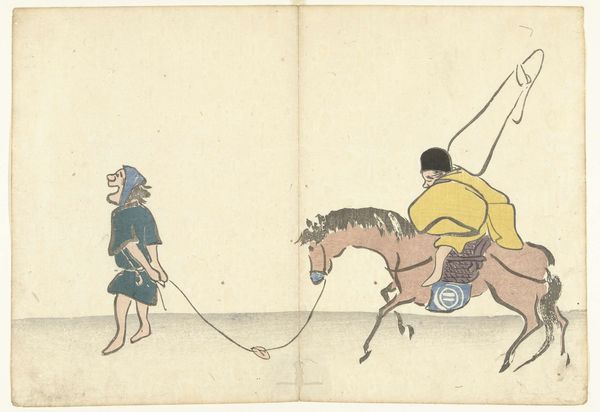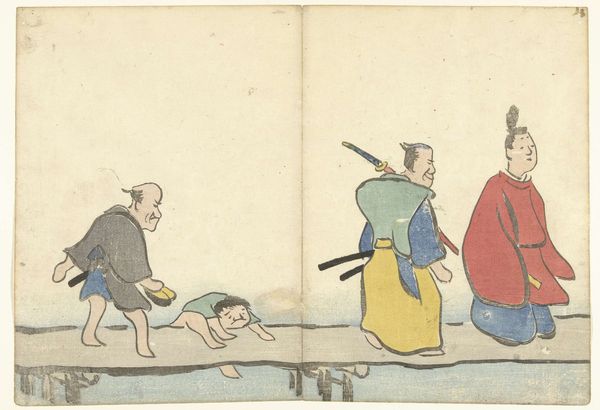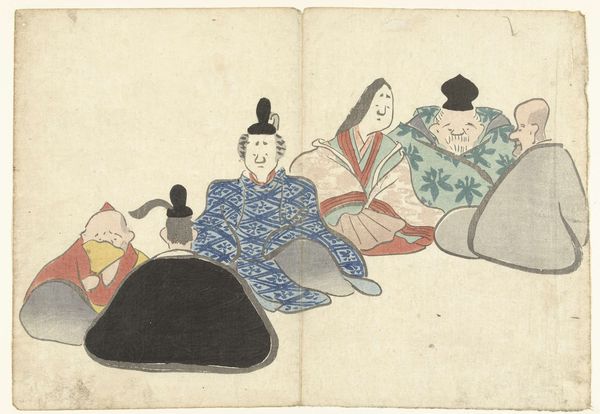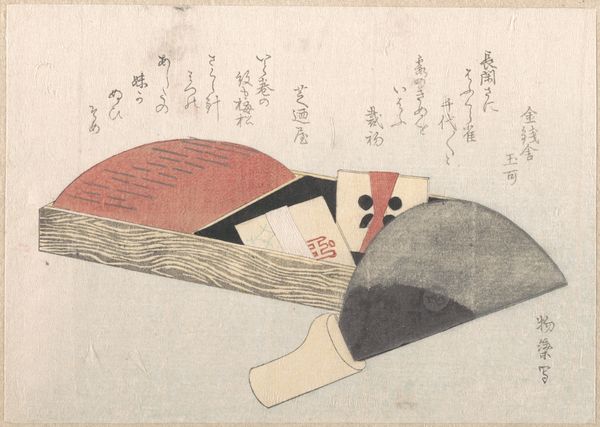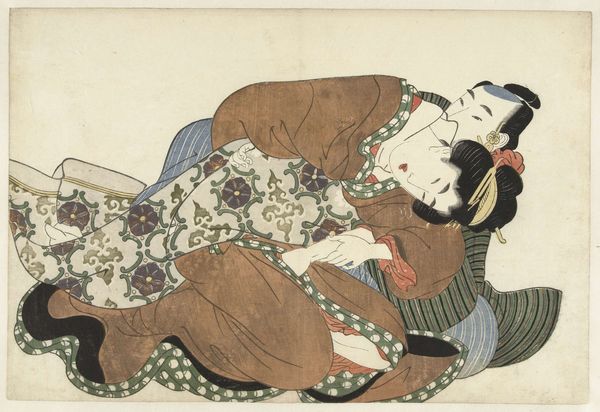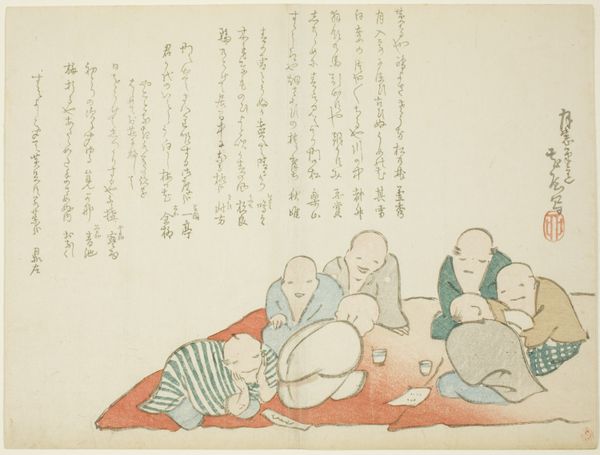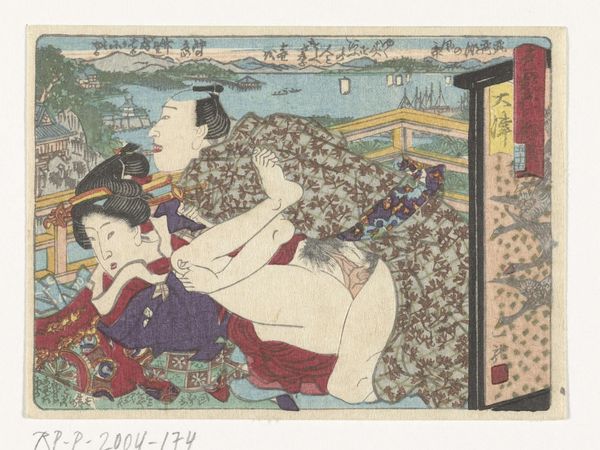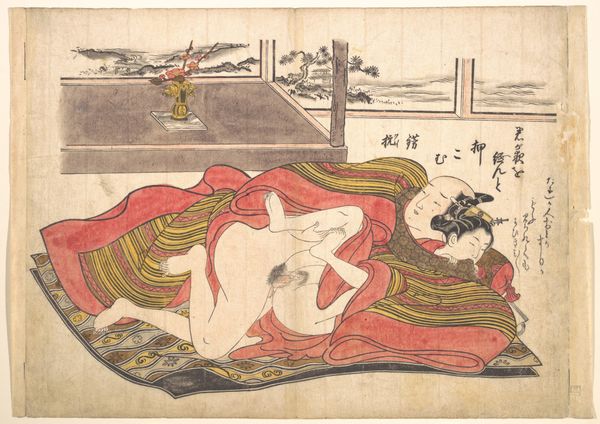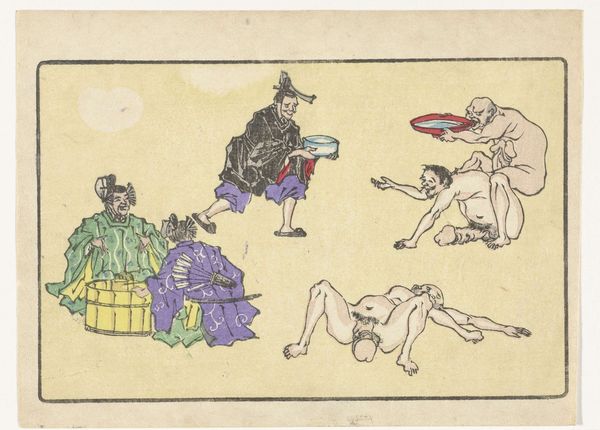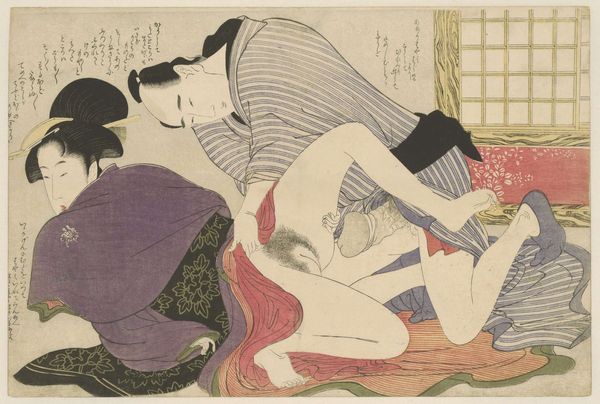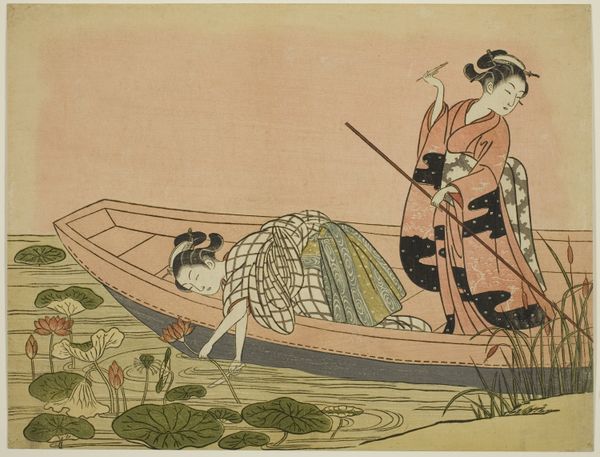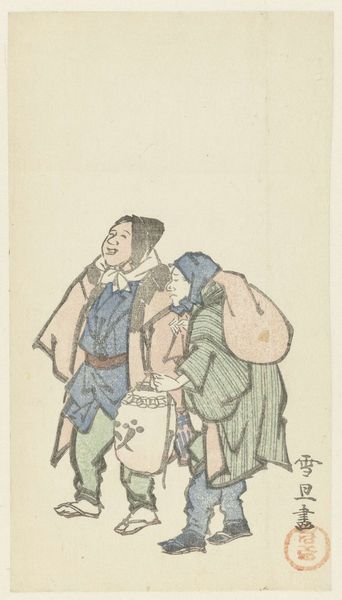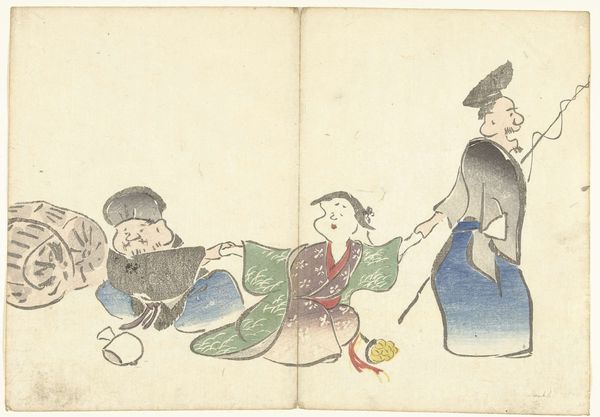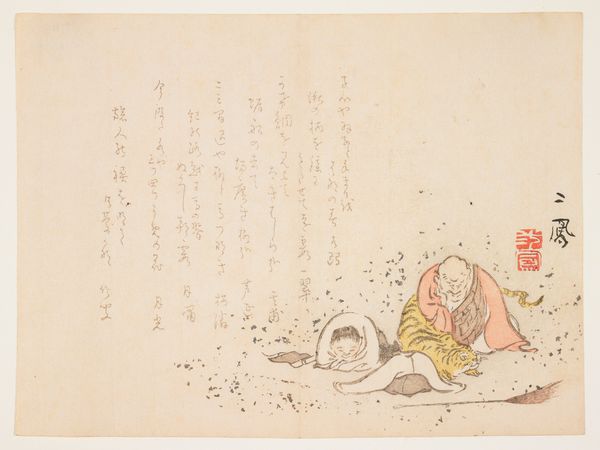
print, woodcut
#
narrative-art
# print
#
asian-art
#
landscape
#
ukiyo-e
#
figuration
#
woodcut
Dimensions: height 256 mm, width 368 mm
Copyright: Rijks Museum: Open Domain
Curator: Here we have a woodcut print entitled "Personen in een boot," or "People in a Boat," created in 1826 by Nakamura Hōchū, a Japanese artist of the Edo period. Editor: There’s something serene and immediate about it. The colors are muted but clear, and you really sense the materiality of the paper and the woodcut marks. It's clearly labor intensive in its crafting of what is apparently a spontaneous moment. Curator: It exemplifies the ukiyo-e tradition, capturing scenes from everyday life, though often imbued with cultural significance. It was produced and then accessible to wider audiences due to it being a print medium, contributing to a burgeoning popular culture at the time. Editor: Look at the visible lines created through the printing process! You can really see how the wood block dictates the simplicity of forms and how that limitation informs the whole aesthetic. The production is so clearly evident here, not hidden away. How many impressions could Hōchū have made, given the relative fragility? Curator: Ukiyo-e prints played a crucial role in shaping Western perceptions of Japanese art and culture in the 19th century. Their accessibility, even in reproduction, introduced new visual languages and influenced movements like Impressionism. Editor: The division between ‘high art’ and printed matter gets completely blurred here. Each print would vary in its color saturation or mark making which could have added appeal to collectors looking for unique impressions within what's considered 'mass' production. Curator: Precisely. The scene may depict people on a journey, but more broadly the work represents the democratizing role of printmaking in 19th century Japan. Editor: It brings the aesthetic considerations directly to the labor and process, celebrating the artistry embedded in this very practical mode of making images. I find the work of the anonymous artisans who transferred the work onto wood equally fascinating as that of the named creator. Curator: Indeed. Examining how images like this circulated, both within Japan and abroad, sheds light on broader issues of cultural exchange and the political economies of art. Editor: Ultimately it speaks volumes through its materiality and simplicity, something easily lost in digital reproductions today. Curator: Agreed, and by looking closely at how art is made and consumed, we can gain new insights into the societies and people who created and appreciated it.
Comments
No comments
Be the first to comment and join the conversation on the ultimate creative platform.
